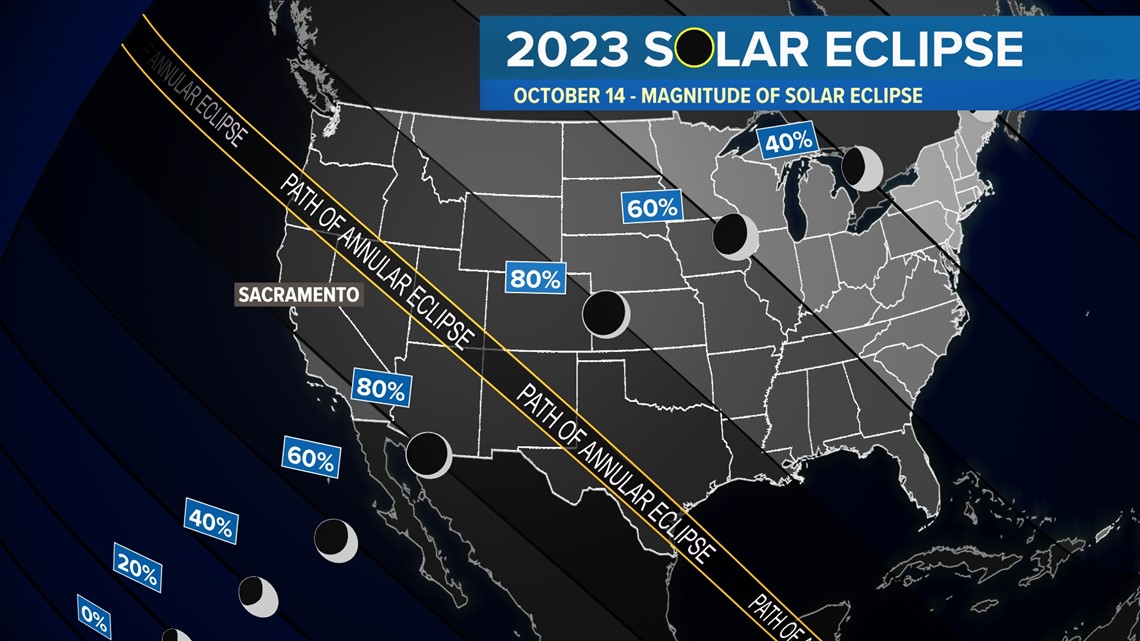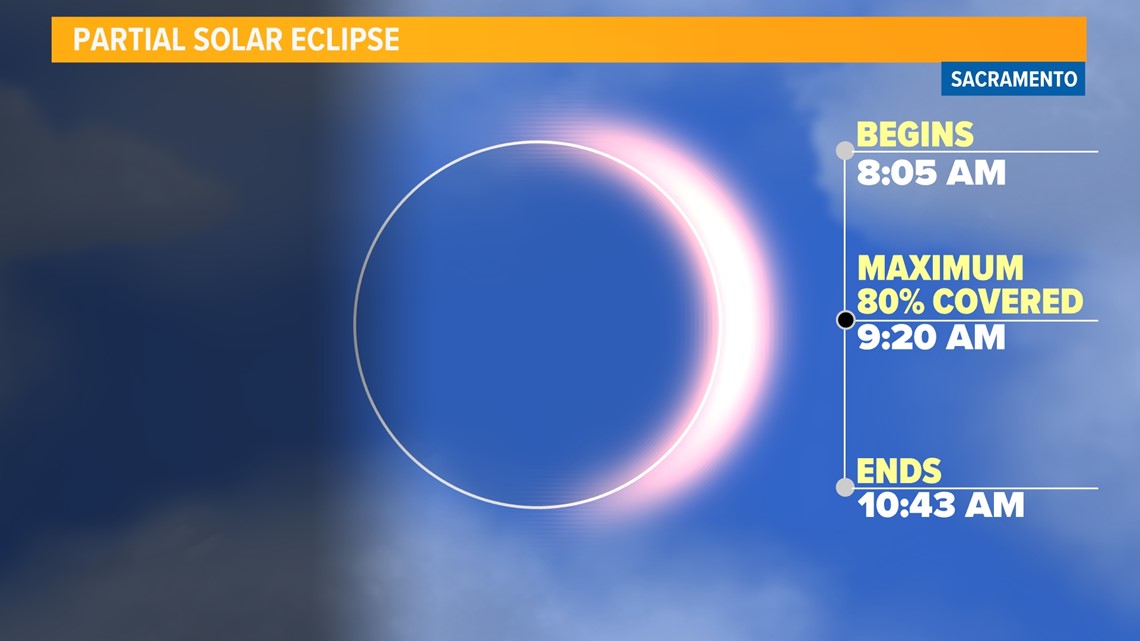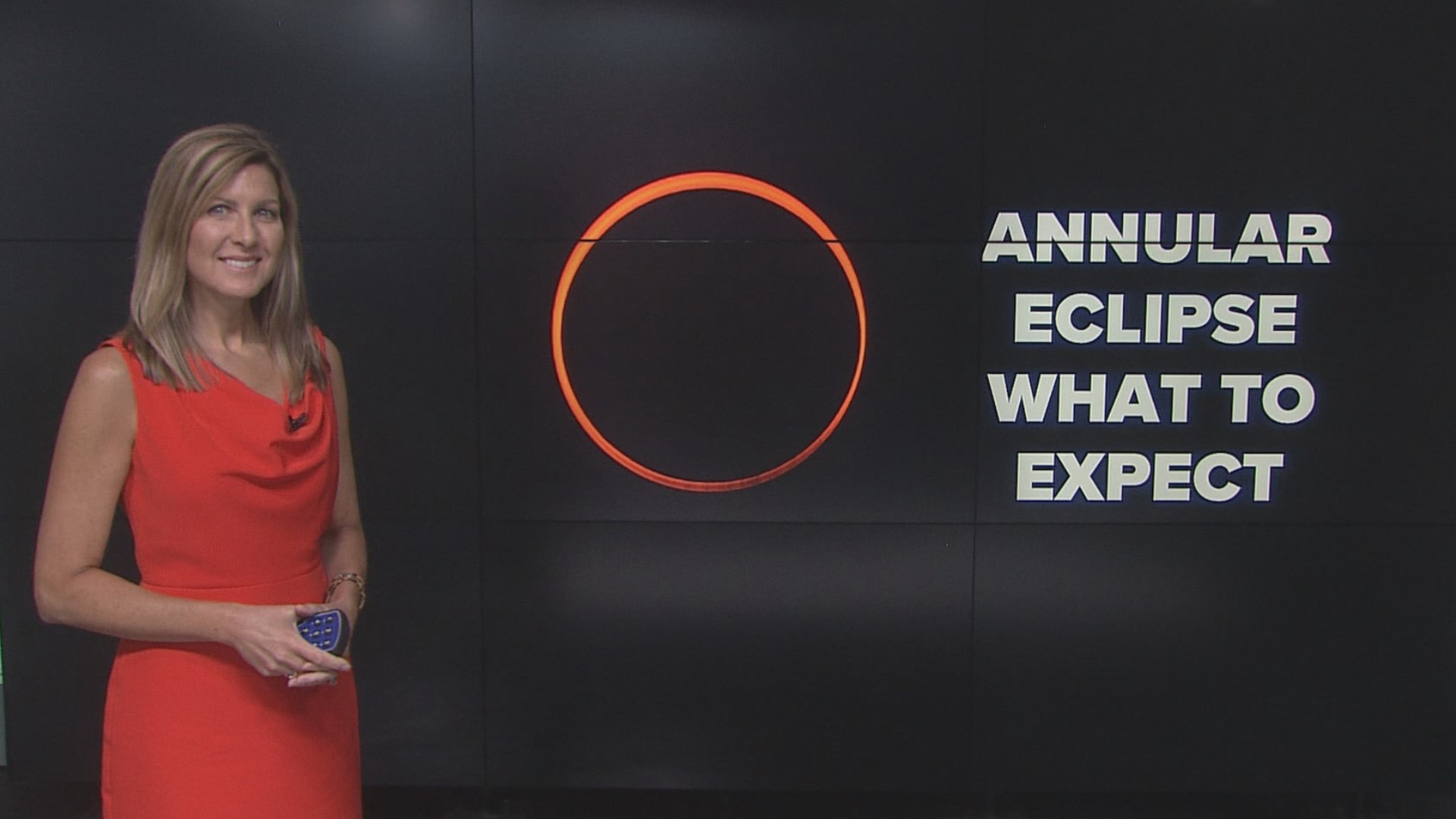SACRAMENTO, California —
A rare annular eclipse is set to occur Saturday morning – the last such event until 2039.
An annular eclipse differs from a total eclipse, like the 2017 "Great American Eclipse", in which the sun is completely obscured by the moon as it passes between the earth and sun.
During an annular solar eclipse, the moon appears slightly smaller than the sun, so it can't block the entire disk, according to space.com. The sun peeking around the edges of the moon is what gives the event the moniker “Ring of Fire”.
Only the far northeastern corner of California will be in the path of greatest viewing of the event, where the moon will cover the entire sun except for the outer edges. Regardless, the rest of Northern California is in a good position to view the solar eclipse. The eclipse's path will stretch across eight states from Oregon to Texas.


In Sacramento, 80% of the sun will be obstructed by the moon on Saturday morning with the eclipse starting at 8:05 a.m., peaking at 9:20 a.m., and ending at 10:43 a.m. One wild card is that cloudy conditions are looking possible on Saturday morning.


Similar to the total solar eclipse in 2017, skies will darken as the moon begins to block the sun's direct light from reaching the ground. Even with cloud cover, the eerie daytime darkness associated with eclipses is still noticeable, according to NASA.
Eye protection will be extremely important to viewing the eclipse. "It is never safe to look directly at the Sun during an annular eclipse without wearing solar viewing or eclipse glasses," said NASA.
Here's a list of tips for safely viewing the eclipse this weekend.



















